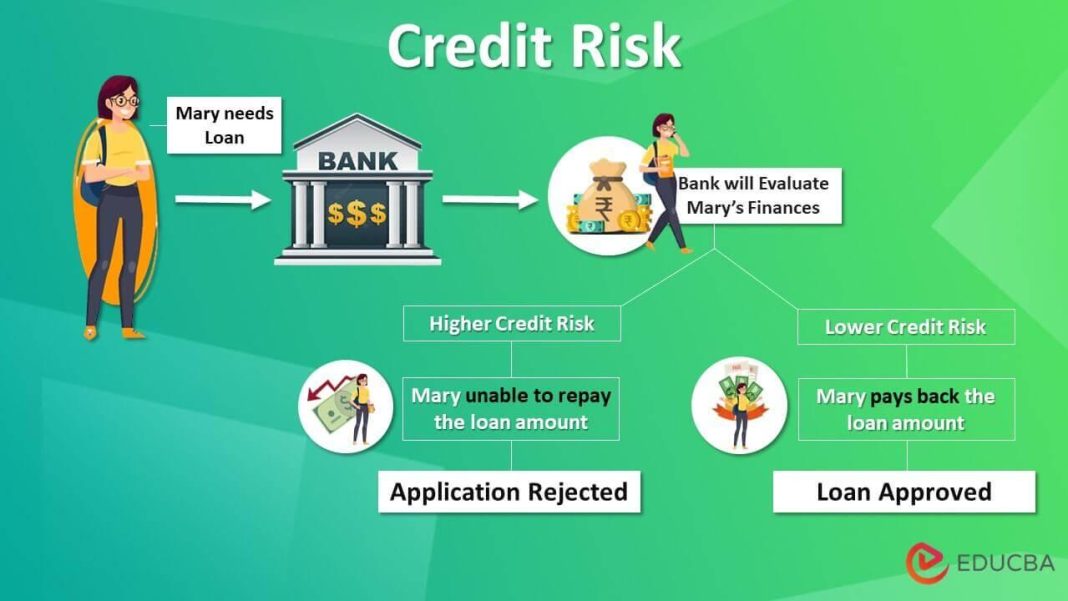In the ever-shifting landscape of global economics, the ability to anticipate credit risk is akin to possessing a financial crystal ball. As markets sway under the influence of geopolitical tensions, technological advancements, and unforeseen global events, the traditional methods of assessing creditworthiness are being put to the test. In this dynamic environment, businesses and financial institutions must evolve beyond conventional metrics and embrace innovative strategies to safeguard their financial health. This article delves into the art and science of predicting credit risk amidst economic turbulence, offering a comprehensive guide to navigating the complexities of modern finance with foresight and precision. Prepare to embark on a journey through the intricate world of credit risk assessment, where data-driven insights and strategic acumen converge to illuminate the path forward.
Identifying Early Warning Signals in Volatile Markets
In the ever-shifting landscape of financial markets, recognizing the subtle indicators of impending credit risk can be the difference between strategic foresight and costly oversight. Volatile markets often exhibit early warning signals that, if identified promptly, can mitigate potential losses. Key indicators include:
- Credit Spread Widening: A noticeable increase in the difference between yields on corporate bonds and government securities often signals rising risk perceptions.
- Downgrades in Credit Ratings: Frequent downgrades by rating agencies can be a harbinger of financial distress within a sector or economy.
- Increased Default Rates: A surge in default rates, particularly in sectors sensitive to economic cycles, can indicate underlying economic stress.
- Market Liquidity Shifts: Sudden changes in liquidity, such as reduced trading volumes or widening bid-ask spreads, can reflect growing uncertainty among investors.
By closely monitoring these indicators, financial professionals can better anticipate credit risk and adjust their strategies accordingly, ensuring resilience in the face of economic turbulence.

Harnessing Predictive Analytics for Proactive Risk Management
In today’s volatile economic landscape, businesses must leverage predictive analytics to stay ahead of potential credit risks. By utilizing sophisticated data models, companies can transform raw data into actionable insights, allowing them to anticipate and mitigate risks before they materialize. This proactive approach not only safeguards financial stability but also enhances decision-making processes.
- Data Integration: Combine historical financial data with real-time market indicators to create a comprehensive risk profile.
- Advanced Modeling: Employ machine learning algorithms to detect patterns and predict future credit defaults.
- Continuous Monitoring: Implement systems that provide ongoing analysis and alerts for emerging risks.
By embracing these strategies, organizations can effectively navigate the complexities of credit risk in an ever-evolving economic environment, ensuring resilience and sustained growth.
Strategies for Strengthening Credit Portfolios Amid Economic Shifts
In the face of evolving economic landscapes, financial institutions must adopt agile and proactive strategies to bolster their credit portfolios. One effective approach is to enhance risk assessment models by integrating real-time data analytics and machine learning. This enables lenders to swiftly identify potential risks and adjust credit policies accordingly. Additionally, fostering a diversified portfolio is crucial; by spreading credit exposure across various sectors and geographic regions, institutions can mitigate the impact of localized economic downturns.
- Regular Stress Testing: Conduct frequent stress tests to simulate different economic scenarios and evaluate the resilience of your credit portfolio.
- Dynamic Credit Scoring: Implement flexible credit scoring systems that can adapt to changing economic indicators.
- Strengthen Client Relationships: Engage with borrowers to understand their evolving needs and offer tailored solutions that can prevent defaults.
By employing these strategies, financial institutions can not only safeguard their credit portfolios but also position themselves to capitalize on emerging opportunities in a shifting economic environment.
Building Resilient Financial Models for Uncertain Times
In today’s volatile economic landscape, anticipating credit risk requires a dynamic approach that integrates both traditional and innovative strategies. Financial models must be designed to withstand the pressures of market fluctuations and geopolitical uncertainties. To achieve this, it’s essential to incorporate a mix of quantitative and qualitative analysis, ensuring a comprehensive understanding of potential risks. Scenario analysis and stress testing are critical tools that can simulate various economic conditions, providing insights into how different factors may impact credit risk. Additionally, leveraging machine learning algorithms can enhance predictive accuracy by identifying patterns and anomalies that may not be evident through conventional methods.
- Data Diversification: Use a wide range of data sources, including macroeconomic indicators, industry trends, and consumer behavior analytics.
- Regular Model Updates: Ensure models are frequently updated to reflect the latest economic developments and regulatory changes.
- Stakeholder Engagement: Collaborate with key stakeholders to gather insights and validate assumptions, fostering a holistic view of credit risk.
- Adaptive Frameworks: Develop models that can quickly adapt to new information and changing conditions, maintaining their relevance and accuracy.
By embedding these strategies into your financial models, you can create a resilient framework that not only anticipates credit risk but also empowers decision-makers to navigate through uncertain times with confidence.





